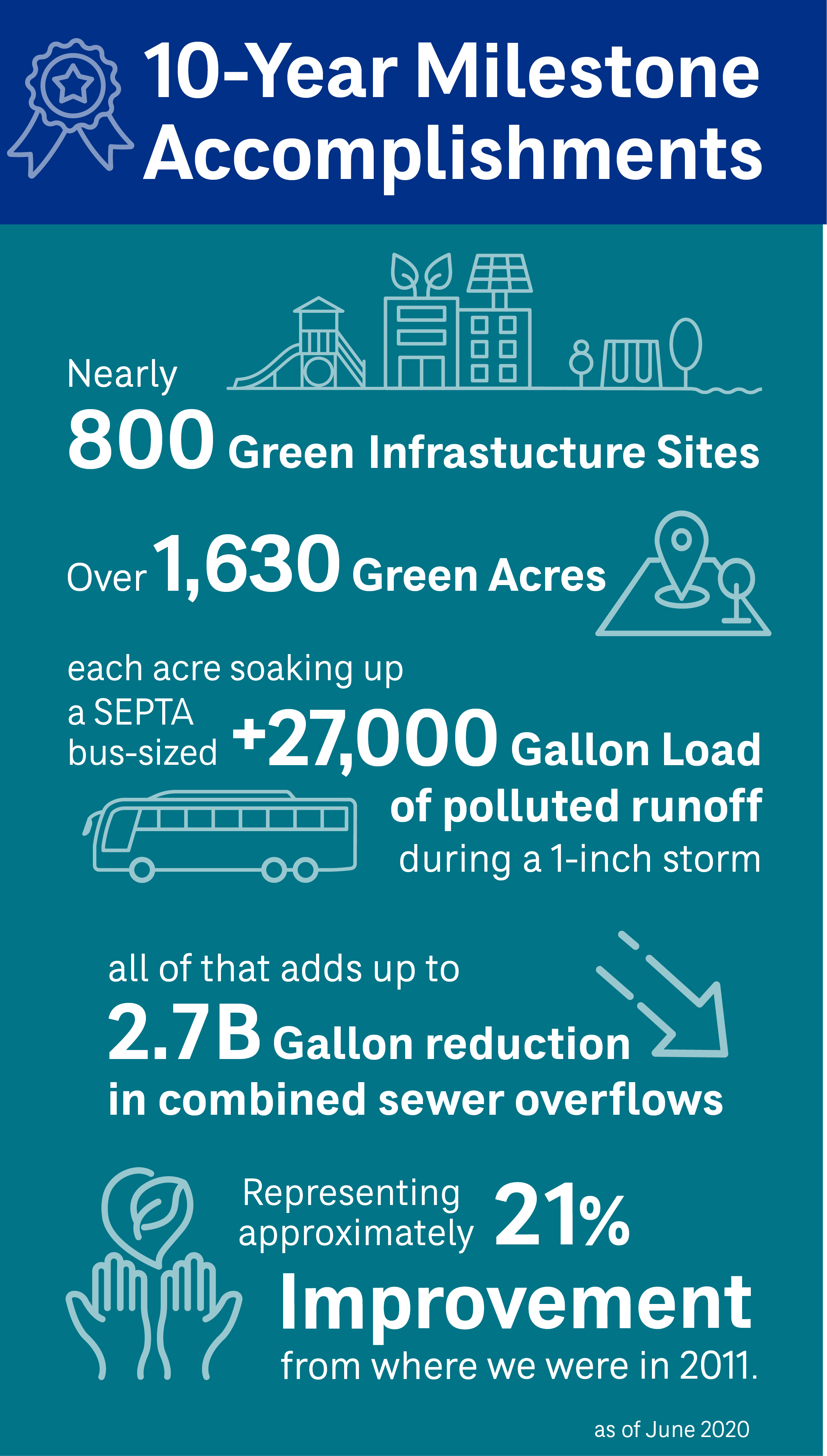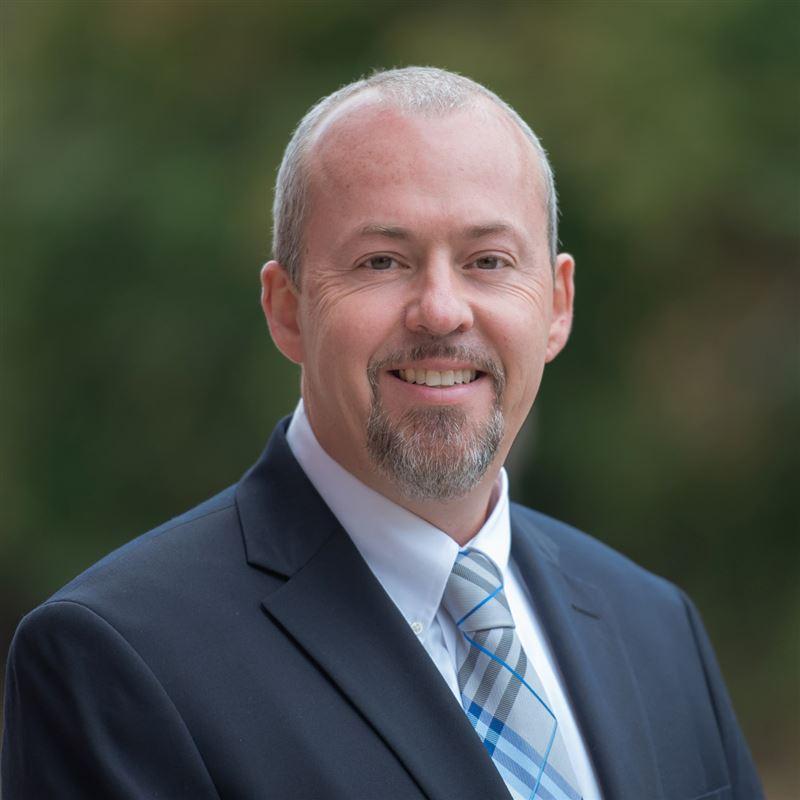10 Years of Partnership Transforms Philadelphia
The city of Philadelphia is home to over 1.5 million people and spans over 150 square miles. One of the United States’ oldest cities, it’s well-known for the Declaration of Independence, Philly soul, cheesesteaks and higher education. It’s also an urban landscape of buildings and roadways, including miles of paved surfaces: as a result, stormwater runoff becomes a major concern during major rainfall events in Philadelphia. In addition, 60% of the city is served by a combined sewer system, and this older section of the city’s system often overflows during wet weather events. Traditionally, cities with combined sewers have built large scale, centralized storage and treatment facilities to prevent flooding and pollution, eventually returning it to a waterway. But rather than prioritizing stormwater storage, which requires large, expensive systems that require pumping each time it rains, the Philadelphia Water Department sought a more affordable, environmentally friendly way to both manage its stormwater and comply with Clean Water Act regulations: the Green City, Clean Waters program.
CDM Smith has partnered with the Philadelphia Water Department for over a decade to facilitate this ambitious, game-changing program. A team of CDM Smith water engineers, landscape architects, city planners, and biologists have been deeply invested in the program since the program began. Green City, Clean Waters has built nearly 800 green infrastructure sites and created green infrastructure serving over 1,600 acres, with each acre soaking up over 27,000 gallons of polluted runoff during a 1-inch storm: the equivalent of a SEPTA city bus! The combined power of these improvements has allowed Philadelphia to achieve a 2.7 billion gallon reduction in combined sewer overflows: a 21% improvement from the program’s inception. And this effort has been paired with a public outreach push including public art, school programs, and appearances by the city’s own water superhero, Water Woman!

For the Philadelphia Water Department to carry out its climate change adaptation program, it needed to obtain future precipitation projections that could assess the effects of fluctuating storm sizes and intensities on storm and wastewater collection infrastructure. Prior use of global climate models with specific regard to Philadelphia provided limited data without accurate insights to specific storm events. The outputs also overestimated the number of consecutive wet days and underestimated rainfall's intensity when compared to current local rain gauge numbers. Then, CDM Smith experts Mark Maimone and Sebastian Malter found a remarkable method to align global climate models with Philadelphia rain gauges to use global climate predictions for 2080-2100 and understand how those predicted global impacts would specifically impact Philadelphia. As a result, the city can make stormwater planning and modeling decisions with a prescient view of what the future will bring.
CDM Smith has also served as a manager of the city’s asset management program. As with many large cities, successfully managing and replacing the network of linear assets is crucial to the continued functioning of Philadelphia’s water system. With a keen eye for data analysis, the team has helped the Philadelphia Water Department implement a risk-based assessment process, basing replacement priorities on factors like failure probability and the public health/economic impacts of a break. When asked to describe his team’s work in this regard, water resources engineer Rajesh Rajan says, “technical excellence is what comes to mind.” The team builds many of its own asset management tools, some developed specifically to support Philadelphia.
Through this partnership, CDM Smith has provided the resources to help make the Philadelphia Water Department as a model for other cities to follow. As client service leader John Hammell says, “Our work with Philadelphia is a true partnership. We serve as an extension of their staff, work closely with their team and the community and bring our national and international experts to support their goals.” Senior water resources engineer Dwayne Myers adds, “we help Philadelphia navigate the legal and technical labyrinth to support their most important priorities.”
The effect on the city has been transformative. “In the last 10 years, Green City, Clean Waters has transformed Philadelphia’s parklands, whether it’s showing residents how native vegetation helps keep waterways clean or by cutting the ribbon on a stormwater infrastructure project,” city Commissioner of Parks & Recreation Kathryn Ott Lovell told the Philly H2O Blog. “These projects will amplify the beauty and functionality of our green spaces in the years to come.”

Philadelphia has increased its green spaces, reduced heat islands, and improved the water quality of its rivers.







